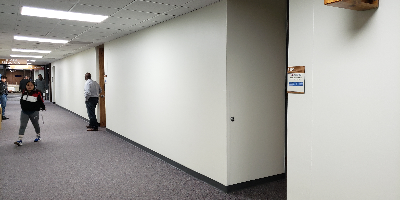jan 1, 1859 - The Delaware Tribe is “railroaded”
Description:
The only way you could get to Lawrence from Leavenworth, Wyandot City, or Quindaro was through Delaware Tribal land. The Delaware Tribe agreed to sell some of their land for proposed routes thinking it would increase the value of their other lands. Special Indian Agent Tom Sykes supported the interests of the LP&W RW and brought pressure for a treaty and lowered the selling price by withholding already agreed upon federal funds for food and heating supplies during a terrible winter in 1860 (Petrowski, p. 19). This coerced sale price for Delaware land was then appraised at a higher price to speculators rather than made available at fair public auction. It is one of the first examples of railroad corruption in Kansas. At the time it was considered acceptable to bribe legislators on pending railroad legislation, and inspection commissioners. In many cases promoters and investors knew the appraisal value of the land before bidding. Bribery and corruption tactics were hallmarks of early Kansas railroads.Charles Robinson became the first Governor of Kansas in 1861. He owned a Missouri River ferry that crossed from Parkville, Missouri to Quindaro. Robinson’s Kansas Central Railroad charter was to connect Quindaro with Leavenworth, and Lawrence (Petrowksi, p. 20). The Wyandot Tribe vetoed the sale of land for a Quindaro terminal based on the fraudulent actions of Special Indian Agent Thomas Sykes who had earlier worked with Robinson to defraud the Delaware Tribe. As Governor in 1862, Robinson was promised 2,560 acres, and his wife Martha, 2,320 acres from the LP&WRR without performing any services (Petrowski p. 36). Although the Robinson’s never received the land this was another example of railroad bribery.
Thomas Ewing Jr. was the “Kingpin” of the LP&W RW, a highly respected attorney, the first chief justice of Kansas in 1861, a leading free state advocate, a Union Army general during the Civil War and two term Congressman from Ohio (Petrwoski, p. 30). Ewing Jr. denied any knowledge of improper attempts to influence legislation saying he was “not active in this aspect of management.” It was hard to prove corruption, according to a special investigating U.S. Railroad Commission, but the question remains as to what services were rendered to the LP&W RW that accounted for $4 million in obligations, and 95,000 acres of land before a graded rail bed (Petrowski, p. 31-32). Even if these bribes were never consummated it doesn’t release the LP&W RW from corruption. Much energy and money were expended to survey land, pass treaties with Natives, and to purchase land before trees were cut or earth moved.
Martin Conway was elected as the first representative to the U.S. Congress under the Wyandott Constitution when Kansas entered the Union in January 1861 (Petrowski, p. 35). He was promised 1,500 acres on either side of the rail way at top rate by the LP&W RW. Mark Delahay, a pioneering newspaper man from Leavenworth and founder of the Wyandotte Gazette. He was a close friend of Abraham Lincoln. Delahay was given $5,000 interest in LP & W RW stock to keep published attention on the location of prospective railroad routes for speculators (Petrowski, p. 36). Four members of U.S. Congress received $1.5 million in stock while the Secretary of Interior, the Assistant Secretary of Interior, and the head of Indian Affairs received $1 million (Petrowski p. 57). These promises were so lavish that the LP&W RW had to increase its capital to $10 million. These financial pressures led to the sale of the first promising railroad in Kansas.
Added to timeline:
Date:
jan 1, 1859
Now
~ 166 years ago
